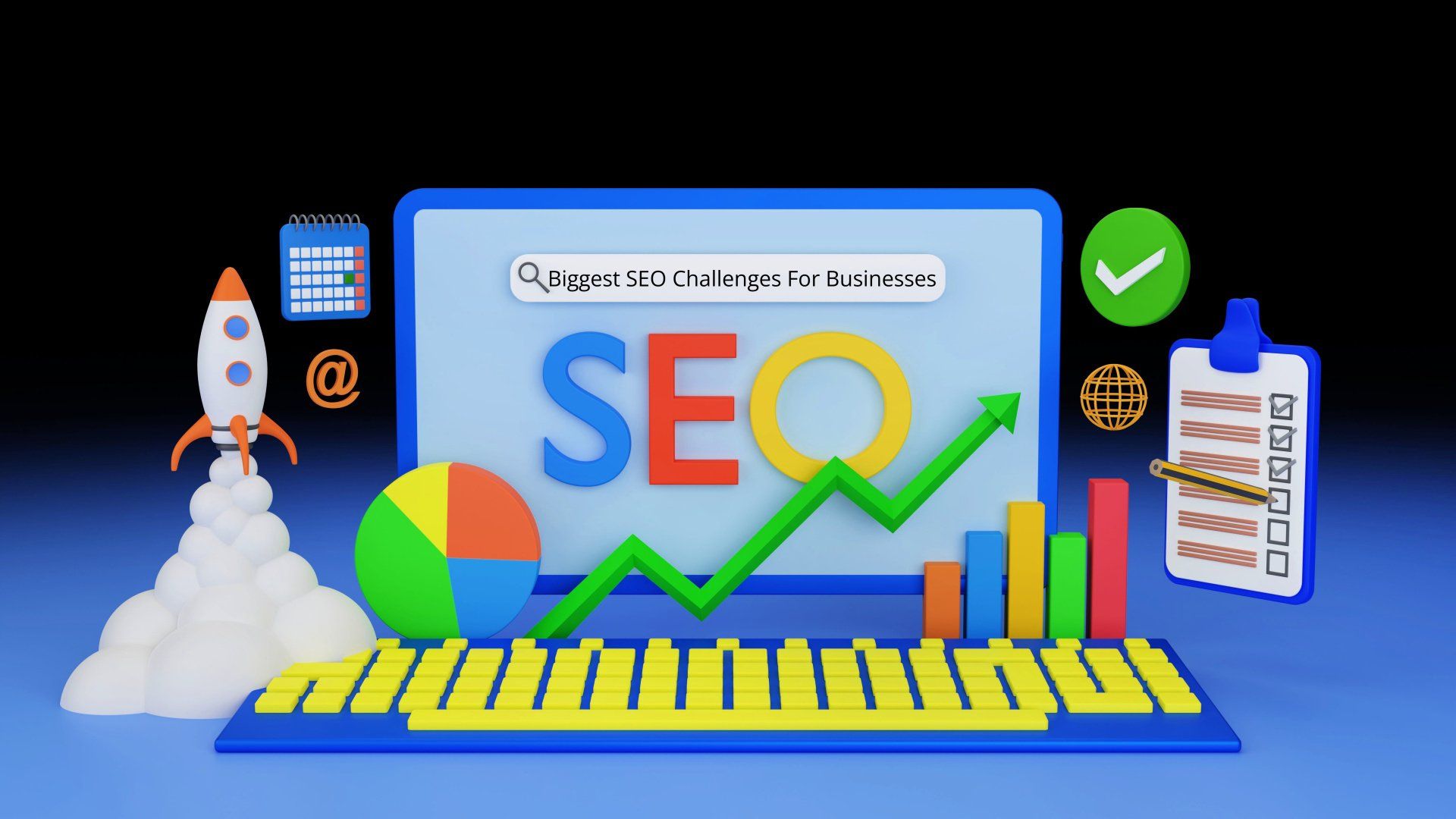The Ultimate Checklist For Optimizing Your Website Structure for SEO Success
Optimizing Your Website Structure for SEO Success

Are you wondering how to optimize the structure of your website for SEO success? This blog post provides a comprehensive checklist for achieving your website's best possible SEO results. We start by examining the importance of website structure and how it affects your search engine rankings. Then, we'll walk through the steps for creating an optimized website structure for SEO success. We'll cover topics such as improving site navigation, creating keyword-rich URLs, and optimizing page titles and metadata.
Understanding the Importance of Website Structure for SEO
Optimizing website structure is an essential factor when it comes to improving your search engine optimization efforts. Not only does it make your website more accessible to search engines, but it also helps improve the user experience of visitors to your site. In this blog post, we will discuss the best practices for optimizing website structure so you can get better rankings and more visitors. The first step in optimizing your website structure is ensuring that all pages have a clear hierarchy. Each page should be organized with specific topics or categories as its focus. The organization should also be easy for users to navigate and understand, which makes it easier for search engines to classify them during crawling and indexing processes.
Additionally, by having clearly defined sections on each page, you can help optimize internal linking between pages, so they are seen as relevant and connected by the search engines' algorithms. Another critical practice when optimizing the structure of a website relates directly to SEO performance, URLs must be kept short and descriptive – meaning no long strings of numbers or gibberish words! When something looks confusing in a URL, chances are potential customers won't attempt access because they don't trust what they're clicking through too - plus, this doesn't look nice on SERPs either! Making sure URLs accurately reflect their content within websites helps boost click-through rates (CTR) significantly, which is an excellent indicator according to Google's algorithm know-how criteria. In addition to organizing webpages into hierarchical groups with concise URL entries, developers need to consider how these sitemaps are built inside their codebase through various structural markup elements such as HTML header tags.
Streamlining Site Navigation for Improved Search Rankings
Search engine optimization (SEO) is critical to any digital marketing strategy. Taking steps to streamline your website's navigation structure can positively affect search rankings, but it must be done correctly. In this blog post, we'll discuss the best practices for optimizing website structure for SEO so you can improve your search rankings and drive more organic traffic to your site. First, let's look at how altering content organization impacts SEO. Creating an easy-to-follow navigational system helps users and search engines understand what pages are related to each other and which contain relevant content about specific topics or keywords that potential customers might use in searches. Structuring information in this way allows all readers — including crawlers — to quickly find what they need without being overwhelmed by too many options or links leading away from main objectives or goals. Second, ensure that your menus and headers are organized according to Google's recommendations as outlined in their Search Console help article on creating sitemaps. This includes using descriptive words rather than generic labels such as "home" when linking from one page to another, ensuring that essential pages appear close together since those sections may often include related products/services, utilizing breadcrumb navigation elements so visitors don't get lost within complex hierarchies of webpages with multiple levels of depth, etc. Applying these techniques will make it easier for crawlers sent out by search engine bots such as Googlebot to index sites efficiently based upon structured interpretation methods like hierarchy analysis and natural language processing (NLP). Thirdly, create categories within website directories or folders while linking them accordingly between different areas of similar importance inside the main menu bar. Again, keep in mind ease-of-accessibility guidelines noted above - plus do not forget about external sources.
Websites should always aim towards balancing internal references versus external ones depending upon the target audience type found online, making sure relevance remains intact while not detracting attention away from primary purposes. Finally, take advantage of various tags available such as Alt Text tags behind images assisting visually impaired surfers along with JSON scripts, allowing deeper understanding resulting in improved impact & relevancy, helping generate increased CTRs.
Crafting Keyword-Rich URLs for SEO Advantage
When optimizing your website for SEO purposes, crafting keyword-rich URLs is essential. This blog post will provide you with the best practices and tips for ensuring that your web page URLs are optimized for improved visibility in search engine results pages (SERPs). First of all, you should focus on ensuring that each URL within your site architecture can be indexed correctly by search engine bots. This means creating simple, concise URLs and removing unnecessary parameters or segmentation points — plus, having a descriptive file name works wonders! To ensure robots can understand each page's aim more efficiently, use keyword phrases at the beginning of titles and include relevant category words in them as well.
Additionally, ensure any hyphens and underscores used on individual pages aren't excessive or repeated. Avoid using session IDs when possible; if necessary, try changing them regularly so they don't become irrelevant over time, which could affect the ranking in SERPs. Make sure there are no extra characters after files – including html extensions – as these will interfere with the navigation components' indexing capabilities, allowing visitors to find what they're looking for quicker, amongst other things. Finally, add redirects from old URLs where needed! Redirect traffic from outdated links to active ones automatically through permanent redirects and preserving link juice/credibility established earlier while preventing potential errors from appearing due to broken links being presented via SERP results or elsewhere online are both beneficial aspects providing an intuitive experience, practical when performing regular maintenance work and content overhauls, etc. To close off this section, let's quickly break down some reminders - Create simple & concise URLS, Include relevant keywords, Use hyphens & underscores sparingly, Avoid session IDs, Remove HTML extensions & additional characters at the end, and add redirects from old URLS when needed. Following these steps outlined above, it should enable you to craft effective keyword-rich URL structures, which can help improve SEO outcomes associated with website structure design across multiple facets moving forward.
Configuring Page Titles and Metadata for Maximum Impact
Optimizing your website structure for SEO is vital to maximizing the impact of your content and optimizing organic search performance. As a result, configuring page titles and metadata can be essential to any website's Search Engine Optimization strategies. In this blog post, we will break down some best practices to help you create compelling titles and metadata that can improve your site's visibility in search engine results in pages. Firstly, it's essential to understand why each element should be optimized. Page titles are one-way search engines that identify what each web page is about; they give visitors an indication of the nature or purpose of the content found on that page. At the same time, proper meta descriptions offer visitors more details into what they might expect from your page once clicked through, often becoming the difference between a click and no click.
Thus, having good keywords embedded within both page titles and meta descriptions is vital in helping attract potential customers or readers who may be searching for related topics relative to yours. When creating compelling page/metadata tags, keep them catchy but relevant with no more than 65 characters. Secondly, ensure all tags remain unique across different types of pages. Hence, do not confuse crawlers by indexing identical information which would negatively affect rankings due to usability red flags raised by end users clicking multiple links serving up redundant info, ultimately resulting in deflated visitor retention.
Thirdly focus on Meta Keywords, aka Tags placement lower down within HTML code, making sure syntax remains tidy, again avoiding Google penalties + bolstering findability rates among other major SERP providers like Bing, Yahoo & DuckDuckGo. Finally, prioritizing core target terms while embellishing sentences enveloped around phrases displayed per blurb goes a LONG way, increasing overall traction, i.e., "content value" compound effect leading to higher CTR %, bringing lots of love back! In conclusion, these four essential tips covered here today should provide a comprehensive overview, ensuring properly configured descriptors are placed inline webpages contributing a vast range of advantages. Now That You Know What to Do, Get It Done Today!
Optimizing Internal Linking for Increased Visibility
Internal linking is one of the most crucial SEO strategies to help you get better visibility in search engines. It helps facilitate navigation, create a logical website structure, and improve keyword relevancy for targeted pages within your site. One of the biggest advantages of strategic internal links is improved relevance between specific sections or content on your website—a technique known as siloing. Additionally, internal links enable visitors to navigate your site easily, improving user experience and encouraging more time spent exploring multiple web pages on a single domain. This comprehensive guide will discuss why optimizing internal linking is essential to SEO success and provide best practices to optimize your website structure for higher visibility in search engine results pages (SERPs).
When creating an optimized internal link structure for improved visibility in SERPs, begin by analyzing keyword opportunities from topics related to existing page contents or upcoming blog posts planned for the following months ahead. From there, create highly relevant anchor text tying together these keywords with corresponding web pages across the entire domain while simultaneously adding quality context. With careful planning and implementation, you can ensure smooth visual flows across each homepage's different categories and endpoints.
Leveraging Heading Tags for SEO Benefits
Are you wondering how leveraging Heading tags for SEO benefits can help optimize the structure of your website? Search Engine Optimization (SEO) is a must-have in today's competitive online environment. To successfully meet the requirements of search engine algorithms, it is vital to ensure that websites are well structured and optimized using best practices. One effective way to improve website structure and boost SEO rankings is by correctly leveraging heading tags. Heading tags are webpage HTML codes to indicate headings, subheadings, and other page elements. Optimizing these tags accurately allows search engines to quickly understand the hierarchy and context of content on a webpage. This will increase visibility in SERPs while improving user experience on a website.
This comprehensive guide has outlined some best practices for optimizing website structure with heading tags for SEO benefit. Use exact keywords for each tag – It's important that keyword phrases accurately reflect the information within each tag so that search engine crawlers can quickly locate them. Choosing specific long-tail keywords over general terms can be beneficial as they are more likely to appear in organic searches than generic words or phrases. Furthermore, placing these relevant keywords at the beginning of an H tag also helps emphasize their importance relative to millions of other pages indexed by Google or Bing.
Utilize Internal Linking Structure -Well-placed links from articles associated with your targeted subject matter add depth to any webpage. Aiming to provide additional resources that may attract readership, those visiting should find extra related materials outside what has been specified.
With a few simple tweaks to your website structure, you can ensure that search engines properly index and recognize the content on your site.
By leveraging heading tags with the strategies outlined in this Ultimate Checklist for Optimizing Website Structure for SEO Success, you can ensure that your website's structure is optimized to rank higher and achieve better SEO results. By following these best practices, you'll get more organic traffic from search engines and potentially see an increase in revenue.









